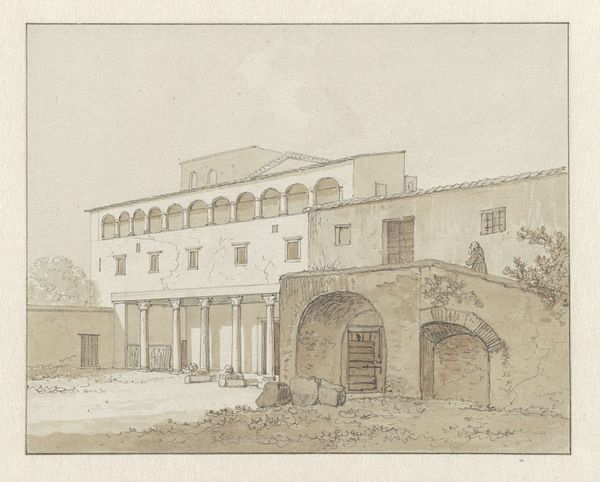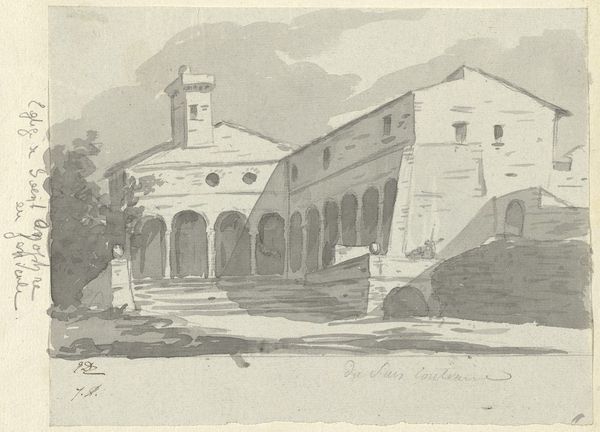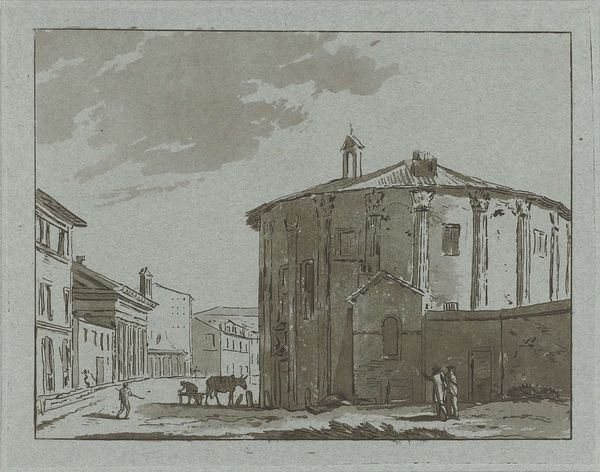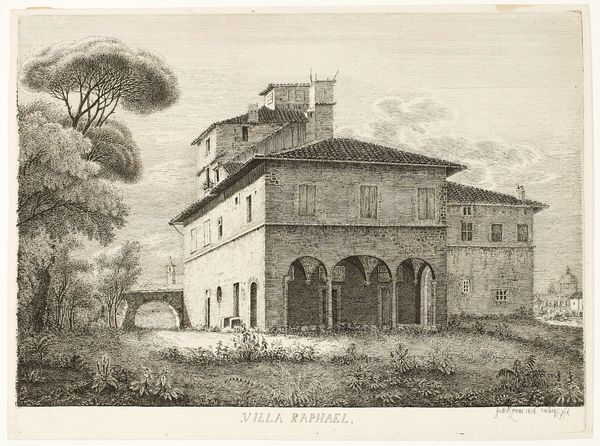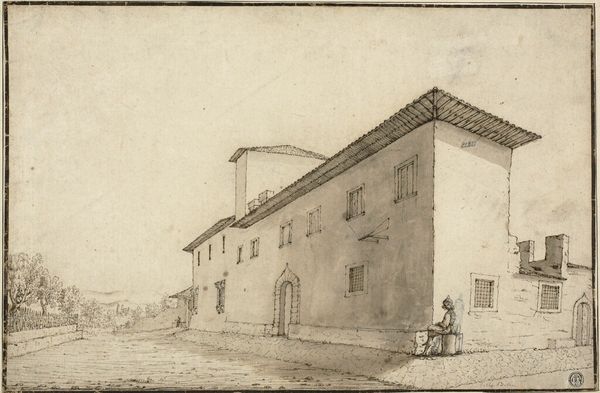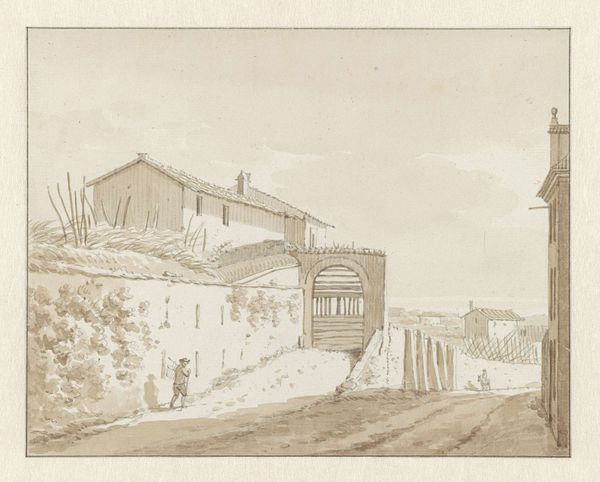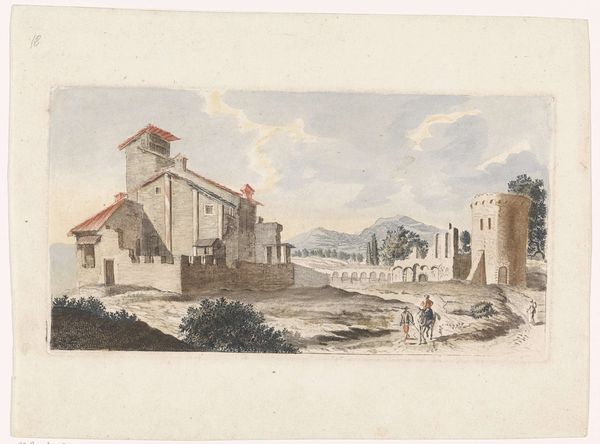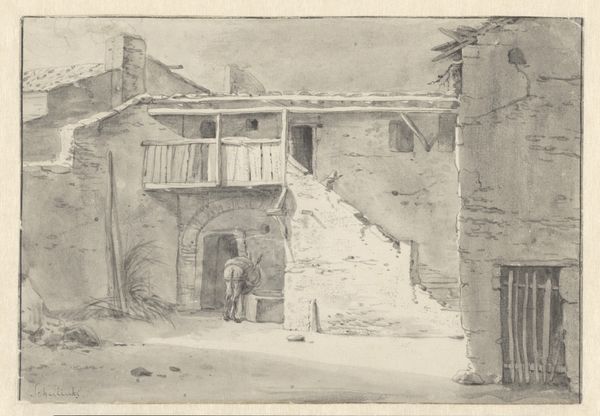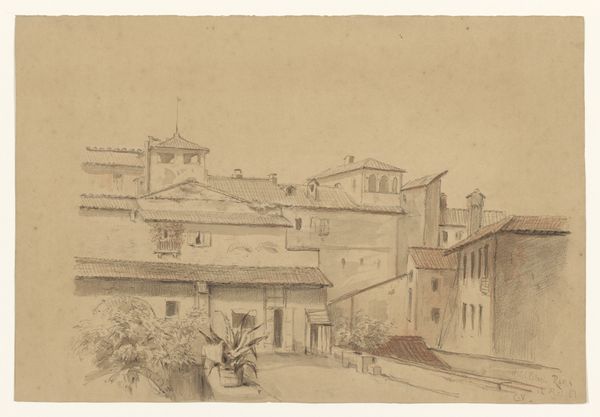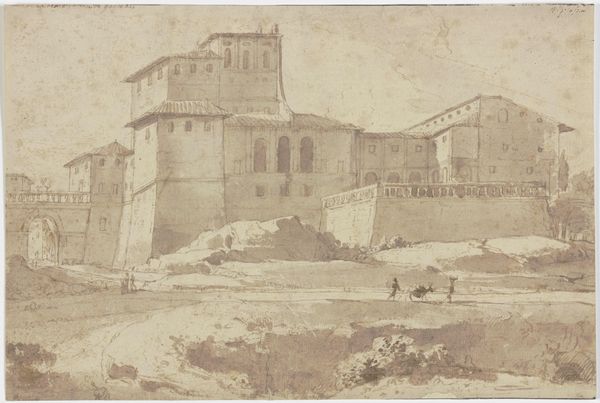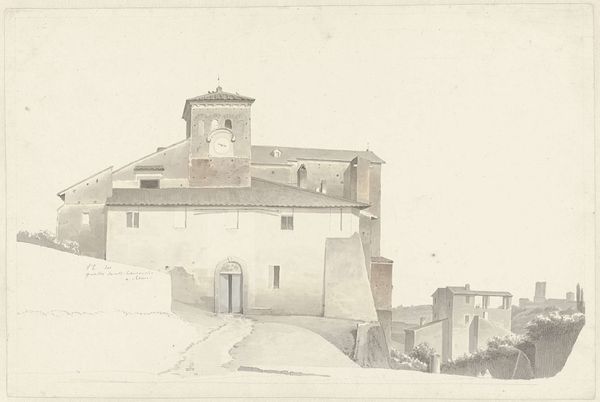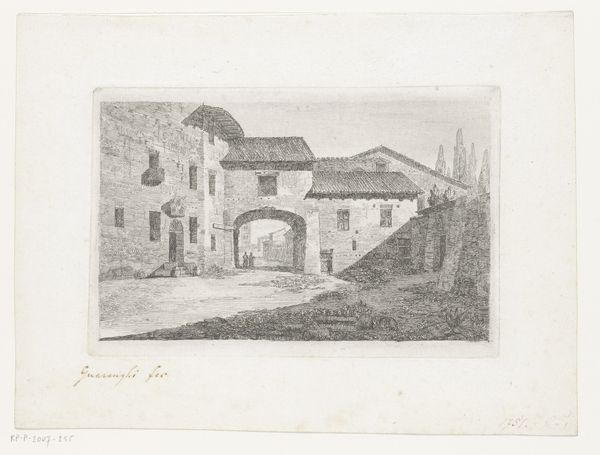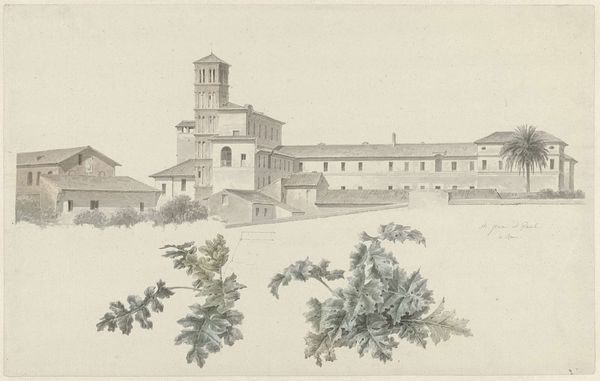
drawing, etching, paper, ink
#
drawing
#
neoclacissism
#
etching
#
landscape
#
classical-realism
#
etching
#
perspective
#
paper
#
ink
#
romanticism
#
cityscape
Dimensions: height 145 mm, width 191 mm
Copyright: Rijks Museum: Open Domain
Curator: This is Daniël Dupré’s "The Church of S. Stefano Rotondo in Rome," likely created sometime between 1761 and 1817. The artwork, rendered in ink and etching on paper, provides us with an interesting view of this ancient building. Editor: There’s something almost dreamlike about the muted tones. It’s as if the grandeur of the church is being observed through a haze of history and perhaps a slight melancholic lens. The lone figure emphasizes the vastness of the scene, or perhaps, an eerie desolation. Curator: Precisely! Dupré's work often reflects the Neoclassical and Romantic movements intertwining, revealing the public’s complex relationship with historical architecture. It comes at a time when architectural renderings are less about perfect representations and more about impressions, emotions and reflections. The artist places us in the composition with perspective techniques. Editor: And I think there’s an interesting juxtaposition in seeing such a religious building rendered with what appears to be detachment. It almost feels like a critique of institutional power or at the very least a consideration of temporality - looking at institutions as something created that eventually deteriorates, like looking through the ruins to see something majestic is behind it. It also appears as if we, the viewers, are outside of society because there is a stone wall that separates us from the church Curator: It could be argued that it is indeed part of a wider artistic discourse questioning established orders while embracing classical forms. Many artists, academics, and writers challenged the status quo after major social upheavals, using art to instigate philosophical debate and political change. The cityscape functions to emphasize how such things, no matter how majestic, will always succumb to nature’s elements. Editor: Dupré successfully engages in these socio-political conversations using delicate linework, providing the artwork a critical dimension and inviting us to reflect on these buildings. Curator: Agreed. It presents a fascinating intersection of artistic style and social commentary, showcasing Rome as both a place of grand architectural achievement and of contemplative spaces open for introspection. Editor: The romantic solitude adds an appeal. I think that it resonates today when a growing portion of society begins to ask for transparency, reform, and overall questions the status quo and historical records in hope for a better tomorrow.
Comments
No comments
Be the first to comment and join the conversation on the ultimate creative platform.
